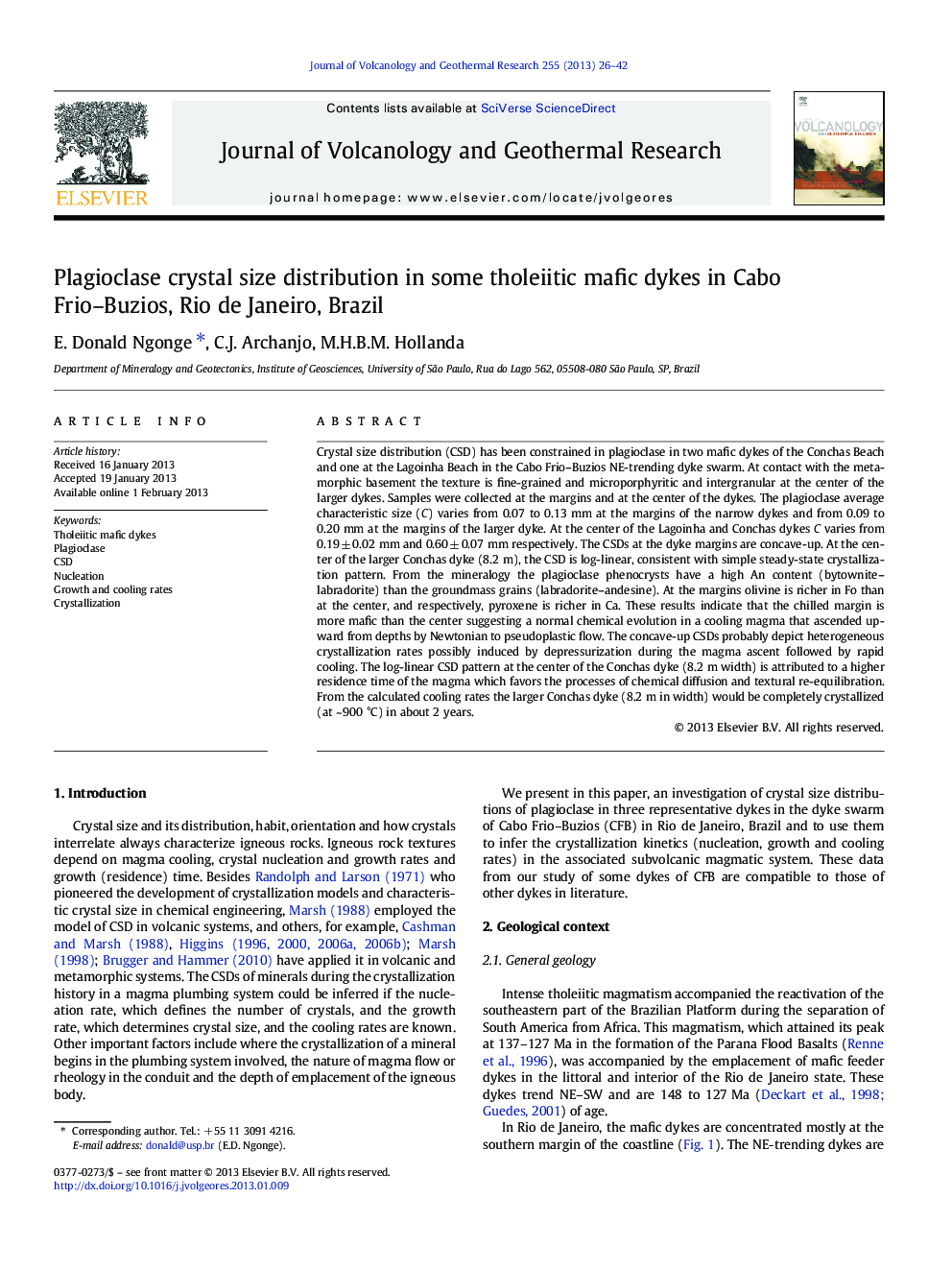| کد مقاله | کد نشریه | سال انتشار | مقاله انگلیسی | نسخه تمام متن |
|---|---|---|---|---|
| 4713446 | 1638366 | 2013 | 17 صفحه PDF | دانلود رایگان |

Crystal size distribution (CSD) has been constrained in plagioclase in two mafic dykes of the Conchas Beach and one at the Lagoinha Beach in the Cabo Frio–Buzios NE-trending dyke swarm. At contact with the metamorphic basement the texture is fine-grained and microporphyritic and intergranular at the center of the larger dykes. Samples were collected at the margins and at the center of the dykes. The plagioclase average characteristic size (C) varies from 0.07 to 0.13 mm at the margins of the narrow dykes and from 0.09 to 0.20 mm at the margins of the larger dyke. At the center of the Lagoinha and Conchas dykes C varies from 0.19 ± 0.02 mm and 0.60 ± 0.07 mm respectively. The CSDs at the dyke margins are concave-up. At the center of the larger Conchas dyke (8.2 m), the CSD is log-linear, consistent with simple steady-state crystallization pattern. From the mineralogy the plagioclase phenocrysts have a high An content (bytownite–labradorite) than the groundmass grains (labradorite–andesine). At the margins olivine is richer in Fo than at the center, and respectively, pyroxene is richer in Ca. These results indicate that the chilled margin is more mafic than the center suggesting a normal chemical evolution in a cooling magma that ascended upward from depths by Newtonian to pseudoplastic flow. The concave-up CSDs probably depict heterogeneous crystallization rates possibly induced by depressurization during the magma ascent followed by rapid cooling. The log-linear CSD pattern at the center of the Conchas dyke (8.2 m width) is attributed to a higher residence time of the magma which favors the processes of chemical diffusion and textural re-equilibration. From the calculated cooling rates the larger Conchas dyke (8.2 m in width) would be completely crystallized (at ~ 900 °C) in about 2 years.
► From selected dykes in the dyke swarm of Cabo Frio and Buzios CSDs were constrained in plagioclase.
► CSDs are either kinked or steady-state in relation to associated thermal crystallization conditions.
► Calculated cooling rates show that the larger dyke of 8 m width took about 2 years to cool.
► Our data for these dykes are compatible with findings by other authors in literature.
Journal: Journal of Volcanology and Geothermal Research - Volume 255, 1 April 2013, Pages 26–42